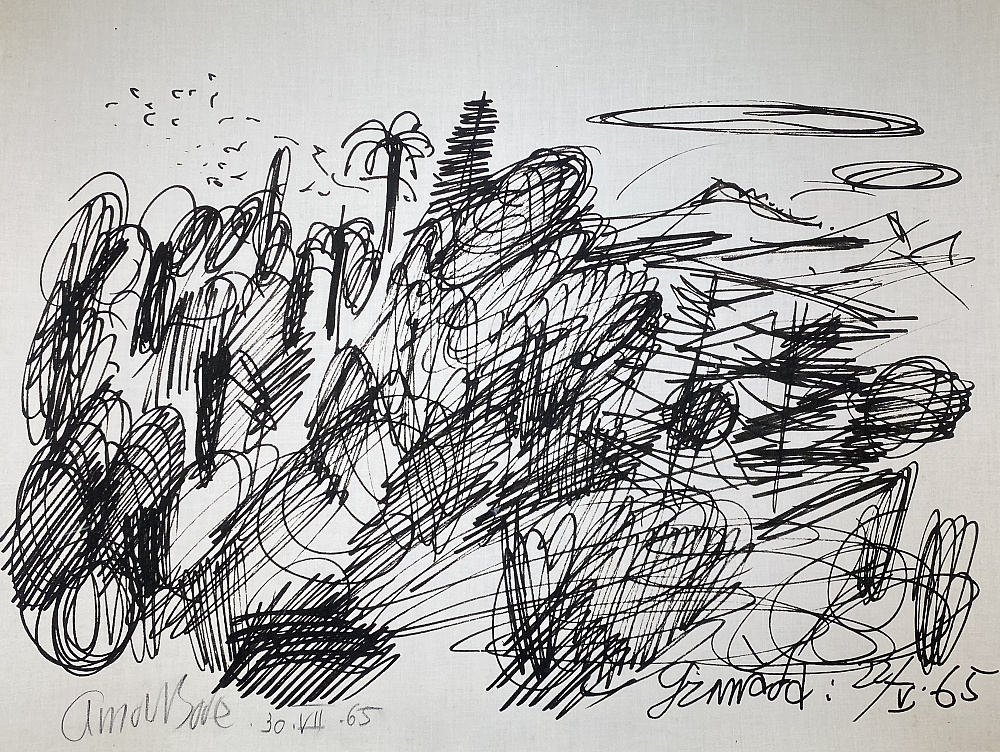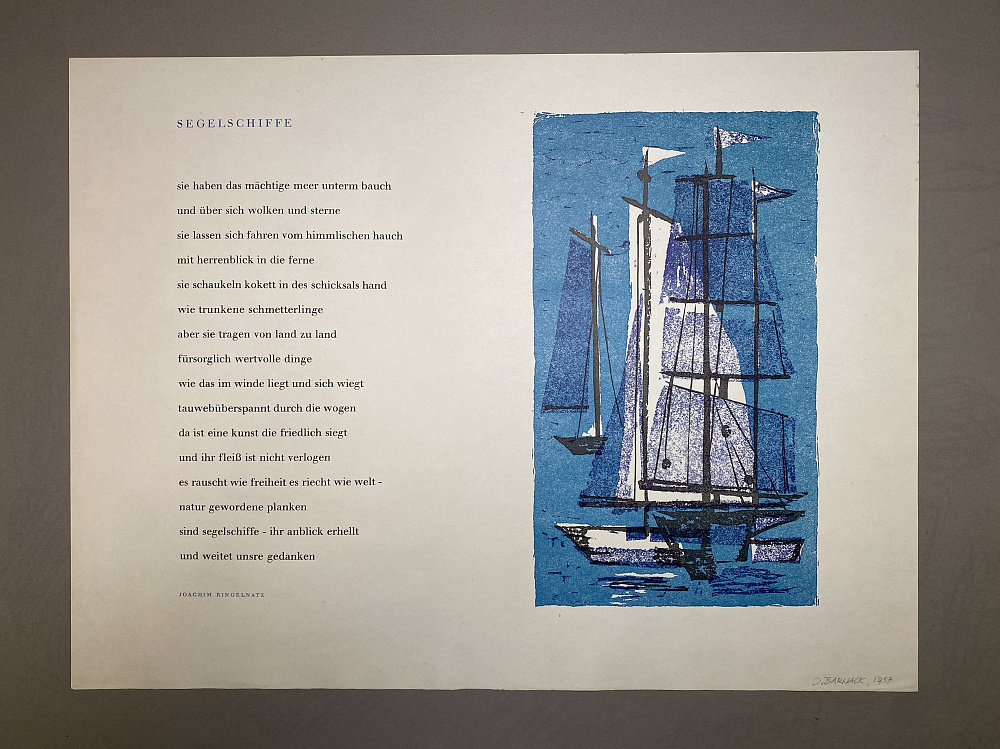A Bode drawing as a photographic print? An unusual addition to the documenta archiv
We recently received an unusual donation: a framed sketch by documenta founder Arnold Bode from 1965, whose special provenance we would like to present. The object comes from the estate of the now 91-year-old Joachim Barnack (born 1932), the long-time assistant of graphic artist Karl Oskar Blase at the Department of Graphics and Visual Communication at the Kassel Werkkunstschule and the newly founded Kunsthochschule Kassel.
The dynamically executed drawing is apparently a landscape depiction that Bode created in large numbers, especially when traveling. This is also the case here: the rugged mountains in the background and a tree that can be identified as a palm tree hardly suggest the landscape and flora of the area around Kassel. As the written inscription on the right-hand edge of the picture reveals, the drawing was created in Spain - more precisely in Granada, Andalusia, where the Bode couple spent a vacation in May 1965 and visited the Moorish Alhambra, among other things.
Some small-scale studies of the lion fountain in the inner courtyard of the palace complex are part of the Bode estate in the documenta archiv collection.
It is only at second glance that a special technical feature of the donation becomes apparent. It is not an artistic original, but an unusual technical experiment: a hand-signed, photographic black and white reproduction on canvas.
After his trip to Spain, Arnold Bode asked his colleague and friend Karl Oskar Blase for some reproductions of his vacation drawings, which he had intended as private gifts. Joachim Barnack carried out the photographic transfer and enlargement to scale and received one of the signed copies from Bode as a thank you. Until a few years ago, the reproduction hung in his private residence not far from Kassel. When the picture frame was opened, another surprise was revealed: a colored linocut from Joachim Barnack's second year of study with a poem by Joachim Ringelnatz.
The documenta had a special impact on Barnack's biography: Experiencing the first edition in 1955 prompted him to take up artistic studies. Since then, he has never missed a documenta exhibition.
We would like to thank Joachim Barnack for the detailed information he provided over the phone and his son Martin Barnack for presenting the donation.


